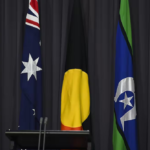Australia’s women: the proposed front line soldiers to support Australia’s future
Federal Treasurer Joe Hockey predicts women’s participation in the workforce to be the front line solution to assist Australia’s future economy. Despina Cassimatis says he fails to suggest what impacts this will have on the female population.
The 2015 Intergenerational Report (IGR) encompassed numerous changes predicted to occur in order for Australia to maintain viable and acceptable levels of productivity. One of these predicted changes include Australian women becoming further involved in the workforce.
Joe Hockey states in the 2015 IGR that population increases predicted to occur by 2055 will rely on the prospect of elderly people and women taking up ranks as the ‘two armies’ of defence to further support productivity and future prosperity to Australia.
According to other statistics suggested within the report, 66% of women today aged 15-64 are currently involved in the workforce. The IGR projects this be increased to 70% by the year 2055. The intergenerational report states further that if Australia’s female participation rate within the workforce was to mirror that of a country such as Canada, Australian’s GDP would allow for a permanent billion dollar increase (Grattan, 2015). Perhaps Mr Hockey needs to understand that we are not living in Canada and should realise that forcing more women to work for unequal pay isn’t his best idea to try and fix our economic issues.
There are several positive and negative opinions based on the reports information regarding women in the workforce. The question of equality within the government report will be sure to flare up debates across the country. Statistical suggestions made by the 2015 IGR regarding women in the workforce provide many gaps and uncertainties for the quality of women’s choices in the future.
It is clear that Mr Hockey believes women are one of the front line soldiers needed to sustain Australia’s future. Power to women! But there is no indication to what cost this entails. Women’s involvement may assist in the sustainability of Australia’s future; however, there are still many inequalities in workforce policies that may limit women’s choices and opportunities if required to work an additional amount. Does the government believe it is because of the lower pay rates and these limited choices that will benefit Australia’s economy? As we wouldn’t have to pay women as much as men? This hardly seems fair, Mr Hockey.
Broderick (2012) supports the ideology that to sustain an economically balanced society, the on-going workplace barriers to women’s participation needs to be resolved. Essentially, this requires men and women to be equal players in the field. Equal pay for equal work as a start. Broderick goes on to suggest that in doing so, Australia’s GDP would in fact increase providing Australia with progressive productivity. Again, Mr Hockey suggests that women should replicate the societal contributions of women in Canada in order to increase Australia GDP. Instead of using other countries models, we should be looking to amend our own policies around workforce equality.
Given the information analysed within the 2015 IGR, I respectfully suggest that other issues including gender discrimination, child care and unequal care responsibilities should be the government’s priority before the naïve push of women’s participation.
References:
- Australian Government. (2015). The Intergenerational Report.
- Broderick. E, (2012). Women in the workforce. The Australian Economic Review. Vol 45. 204-10.
- Michelle Grattan, (2015). No pressue Joe, but you are back in the spotlight. The conversation.
- The Conversation, (2015). Hockey looks to ‘armies’ in Intergenerational Report: experts react.
Despina Cassimatis is studying a Bachelor of Social Work. She has learnt a great deal about the importance of Australia’s social policy and why it is important for people to stand against policy injustices. She believes speaking out against the Intergenerational Report is one of these issues.












